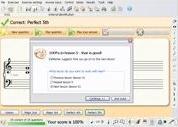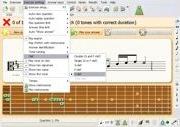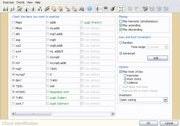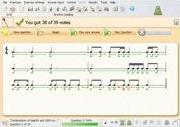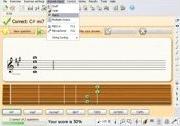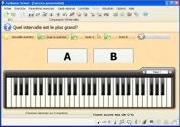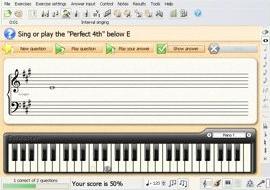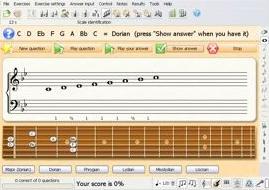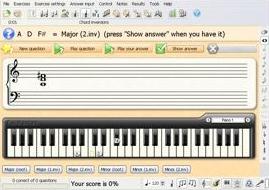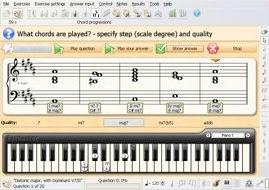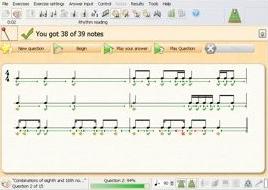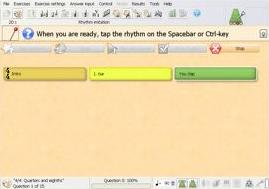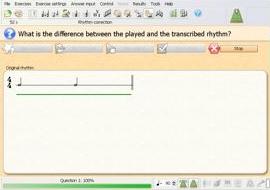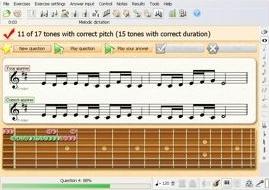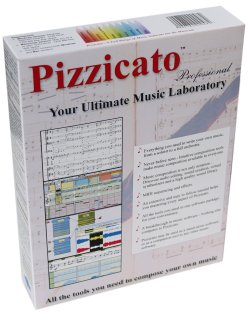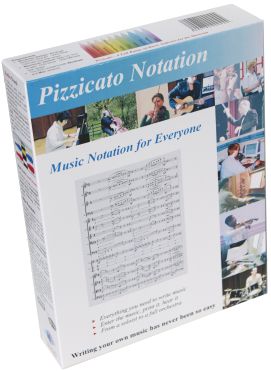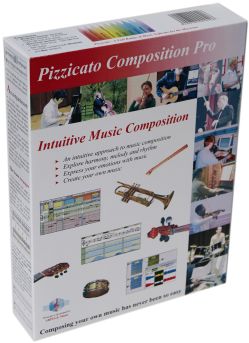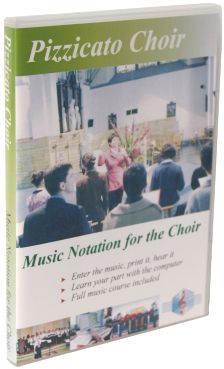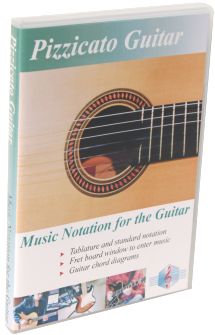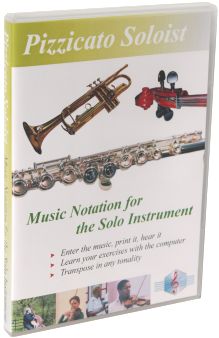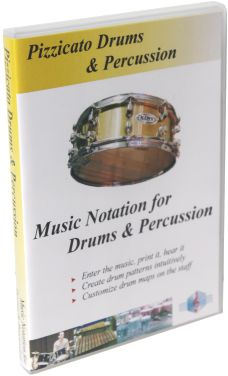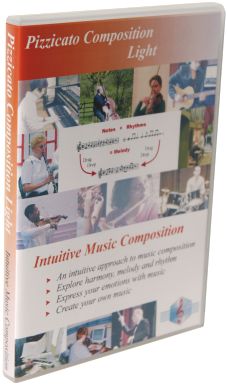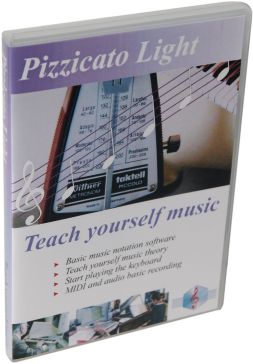EarMaster
Learning Music Is Fine. Practise Music Is Better!
If Pizzicato teaches you music theory and music notation, there is still one ingredient missing: apply the theory to music practise.
How do you learn skills like singing in tune, recognizing intervals, chords and scales, and playing with high rhythmic precision?
We have discovered a wonderful software to help you learn the practise of music and we decided to present it as a partner and companion software to Pizzicato. You can order it on our site, as a downloaded software, on the main Pizzicato order page. Here is EarMaster...
| "Your program is awesome and I am making
great progress. I have been playing classical guitar for almost
20 years now and I have tried other perfect pitch programs and
failed at them. Their concept was always from the playing a cd
and listening to it. Your program is like having a teacher in
front of me. When I make a mistake, it fires it back at me and
pushes me to learn. Thanks again for your wonderful program, I
have been looking for something like this for years. I will
recommend this to all of my students and fellow musicians."
Mark Millage, Classical guitar, Music teacher, Florida, USA |
EarMaster 5 - Interactive Ear Training Software
Improve your number one musical resource - your ear!
What Is Ear Training?
Have you ever thought about what might be the difference between a good musician and a REALLY good musician?
The answer is very likely to be Ear Training!
Ear training is the process of connecting theory (notes, intervals, chords, etc) with music (the sounds we hear). The more you will exercise to recognize this connection, the more you will appreciate playing music, because you will learn to understand what you play.
We, the people at EarMaster, have all experienced the difference ear training makes on our musicianship. This is why we recommend it to you.
Many musicians are not aware of the importance of ear training and have poor aural skills because of a lack of practice.
Don't be one of them, start training your ear!
Why Do I Need Ear Training?
| Music is all about hearing. Having good aural skills is a
fundamental aspect of being a good musician. Understanding the
sounds we hear is a necessity to interact with other musicians, to
reproduce melodies or chord progressions, to improvise or even to
tune your instrument.
A musical ear gives you a complete insight in music. Think of the famous composer Ludwig van Beethoven. His musical ear was so trained that he managed to write some of his most famous symphonies while being completely deaf, simply because he could hear the music in his head and transcribe it. The ability to compose music in your mind is just one of the many skills you will obtain by improving your musical ear. |
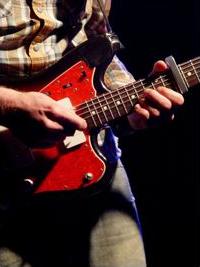 |
No wonder all serious music schools and conservatories are devoting a great part of their curriculum to Ear Training, often with the help of interactive programs such as EarMaster, and have requiremtents in aural skills for applying students.
Even if you are not planning to enroll at a higher music education program, practicing Ear Training is doing yourself a major favor, as it will considerably widen your understanding and mastery of music as a whole, and will simply help you become a better musician!
How Do I Get Started?
 |
The traditional approach is to pay for expensive
private lessons, or perhaps to buy an ear training course on audio
CD.
But now there is a much better alternative: EarMaster! |
| "I've been playing music for 35+ years and
pitch recognition was something I struggled with. After using
EarMaster for less than a month, I made more progress in this
period of time than the preceding 35+ years."
Jim Cox, Amateur musician, Houston, Texas |
EarMaster
Ear training for all musicians
EarMaster will challenge all trained and untrained ears! It is for all vocalists and musicians playing guitar, piano, bass, drums, flute or any other instrument.
A complete ear training package
Your own personal teacher
Powerful tool for advanced users
Customized exercises
Instant feedback
Guitar, piano, bass, violin, cello, ...
Detailed statistics on your progress
Pass your ear training exams
Easy to use for beginners
| "I have been blown away by your EarMaster. I
am at the University of Newcastle Conservatorium of Music,
Australia and have found that using this software has improved
my Aural capabilities enormously. Each point covered by
EarMaster is exactly the areas in which we are working. I find
EarMaster really easy to use. Thank you for turning what can be
a very tedious subject into one that is extremely enjoyable."
Jan Boyle, University of Newcastle Conservatorium of Music, Australia |
Exercise Areas In EarMaster
We propose you two different versions of EarMaster. Here are the exercise areas that you will find in the two versions:
| Exercise Areas | EarMaster Essential 5 |
EarMaster Pro 5 |
| Interval singing | - | Yes |
| Interval identification | Yes | Yes |
| Interval comparison | Yes | Yes |
| Scale identification | - | Yes |
| Chord identification | Yes | Yes |
| Chord-inversion identification | - | Yes |
| Chord progression identification | - | Yes |
| Rhythm dictation | - | Yes |
| Rhythm reading | Yes | Yes |
| Rhythm imitation | - | Yes |
| Rhythm correction | - | Yes |
| Melody dictate | - | Yes |
Descriptions of the proposed exercise areas
EarMaster offers advanced ear training and covers all significant areas in intervals, scales, chords, rhythms and melodies. Each exercise will improve different areas of your musical ear! Using EarMaster will refine all important areas of your musical ear. You will develop greater musicality, better musical confidence and experience real enjoyment of music.
Intervals
Once you get the hang of intervals, it will be easier to transcribe songs, compose songs or tuning your guitar. If you are a singer it will improve your ability to sing in tune and to phrase flawlessly. Whatever instrument you play, EarMaster will help you figure out the melody of a song based on the intervals: “Oh, that’s just a perfect fourth followed by a minor third.” EarMaster features two exercises that will help you do just that.
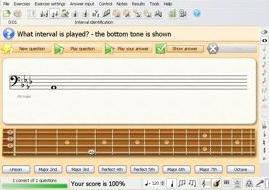 |
EarMaster plays a harmonic or melodic interval; you identify it by its name or transcribe the tones on the piano, guitar or notesheet. |
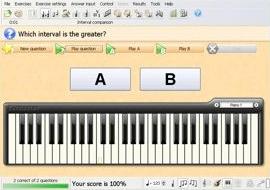 |
EarMaster will play two intervals; you answer which one is larger. This exercise does not require any knowledge about music theory. It is therefore an excellent starting point for beginners. |
Scales and modes
With EarMaster you learn to identify scales (major, minor, blues, bebop, etc.) and church modes (Dorian, Phrygian, etc.)
Chords
Recognizing chords and harmonies is an essential aspect of being able to interact while playing with other musicians. It is also an important aspect of being able to transcribe songs and to compose music. Being able to improvise and to play music by ear also requires knowledge in the functions and structures of chords. Combining harmonies and chords in music requires that you can hear and feel the quality of chords, and that you are familiar with their function within a given key. EarMaster features three exercises that will help you improve these skills.
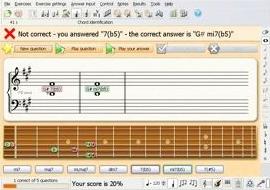 |
EarMaster plays a harmonic or melodic chord; you identify it by its name or transcribe the tones on the piano, guitar or the note sheet. |
Chord-inversion identification
Chord progression identification
Rhythms
Modern music increasingly requires a musician to possess good rhythmic understanding. A good sense of rhythmic variations, the ability to feel a tempo, being able to grasp rhythmic figures, and the ability to keep a tempo are important for any musician. It is not enough to be able to read or hear individual note values; you must also identify a rhythm as a series of rhythmic patterns. EarMaster features four exercises that teach you to read and identify rhythms.
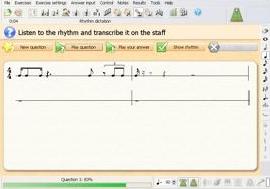 |
EarMaster plays a rhythm; you transcribe it. |
Melodies
Finally, the question of the eternally desirable perfect pitch. Can you transcribe a tune when you hear it? Can you start of singing your starting line without a cue from your pianist or guitar player? Or can you identify the very important note in the chorus that everybody else in the band is playing?
| "Your software has helped my hearing
progress astronomically faster than the traditional 'find your
partner' approach. I am very hard on myself I push myself as an
athlete in training might, and your software keeps up with my
pace quite well. I have grown in leaps and bounds thanks to the
tool you have graciously provided. I say graciously, because the
fee is nominal in comparison to the returns."
Shahzad Ismaily, Professional musician, |

All rights reserved for all countries
Pizzicato is a trademark owned by Arpege sprl






























